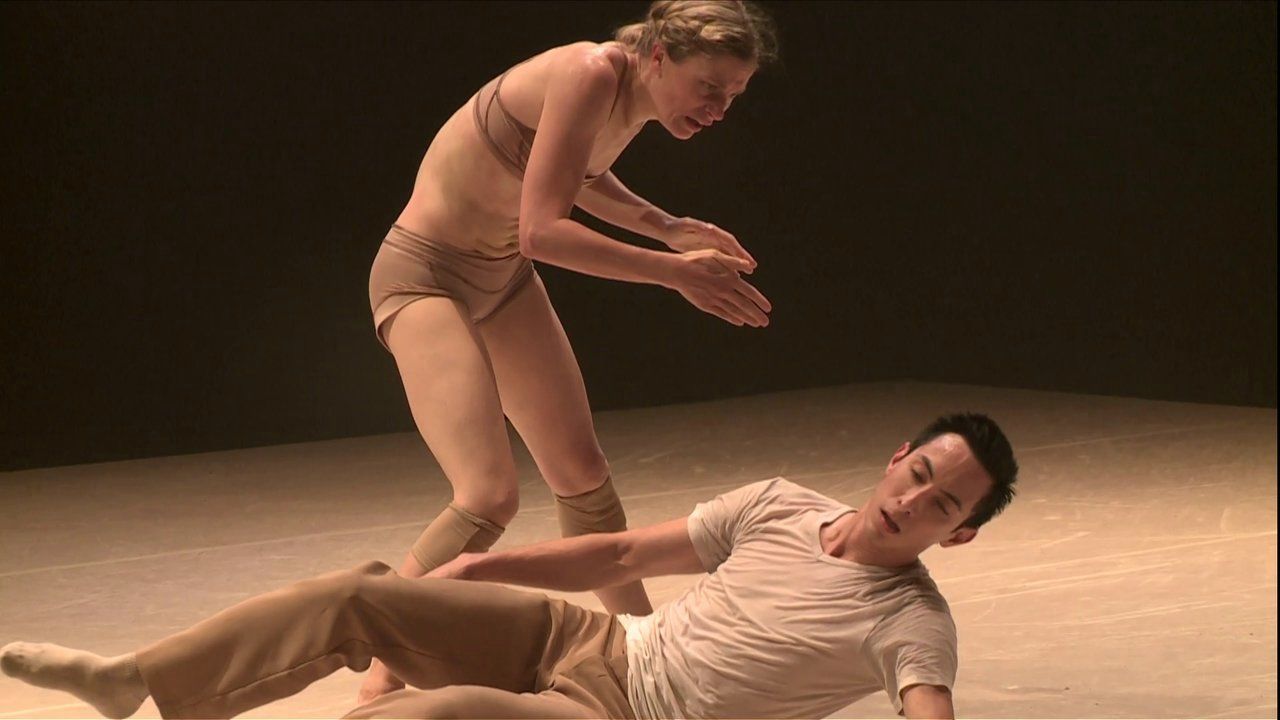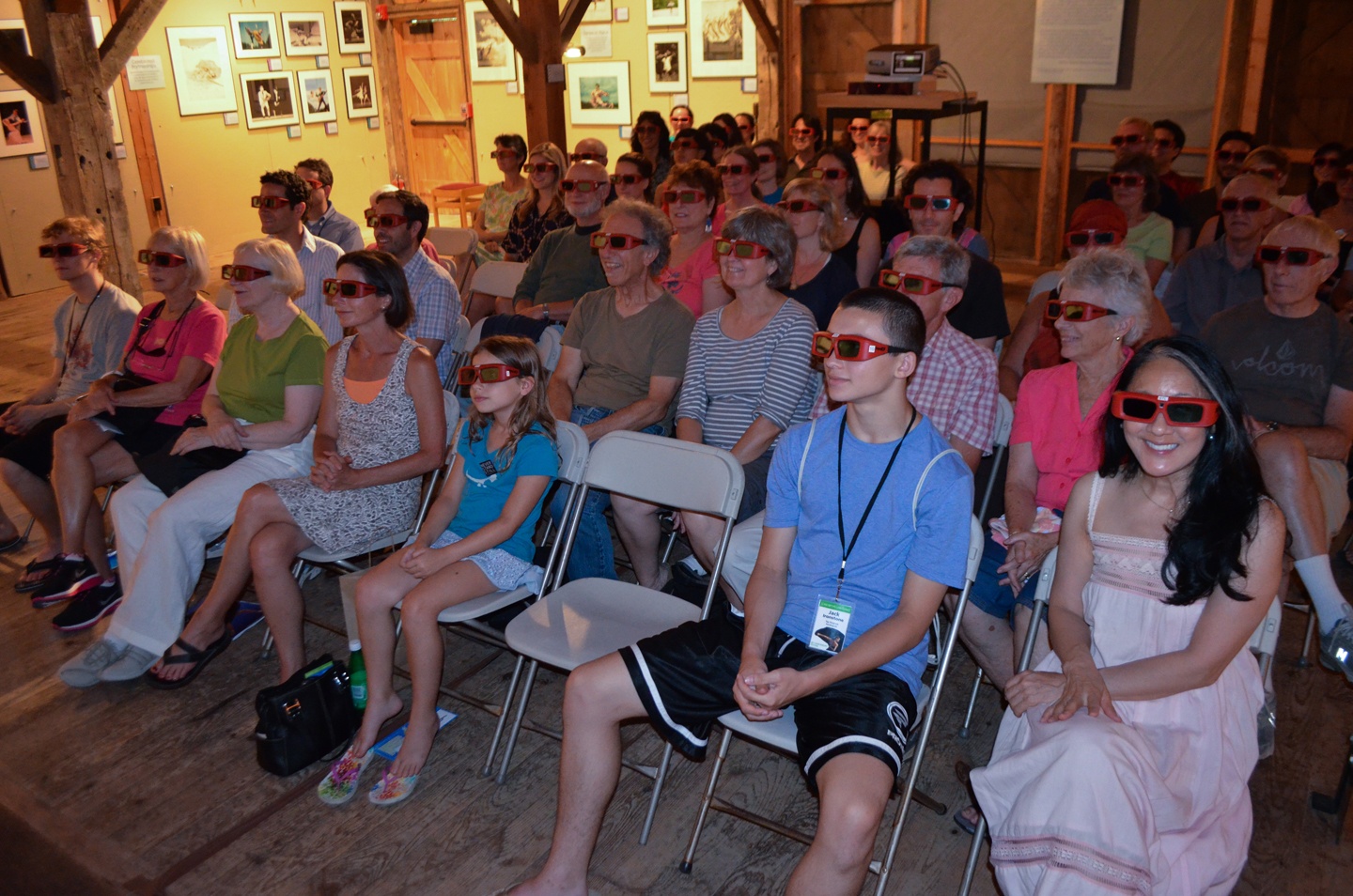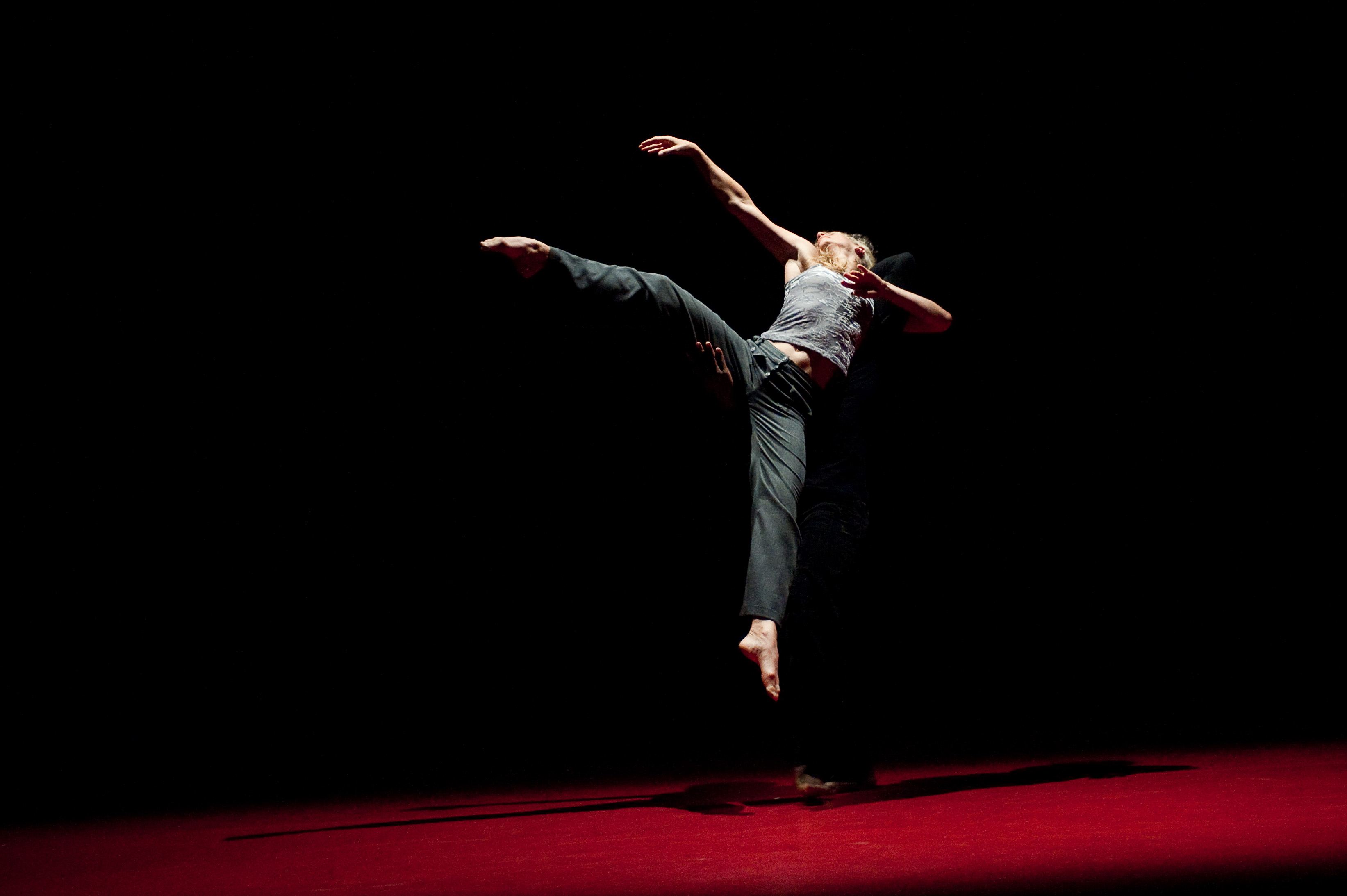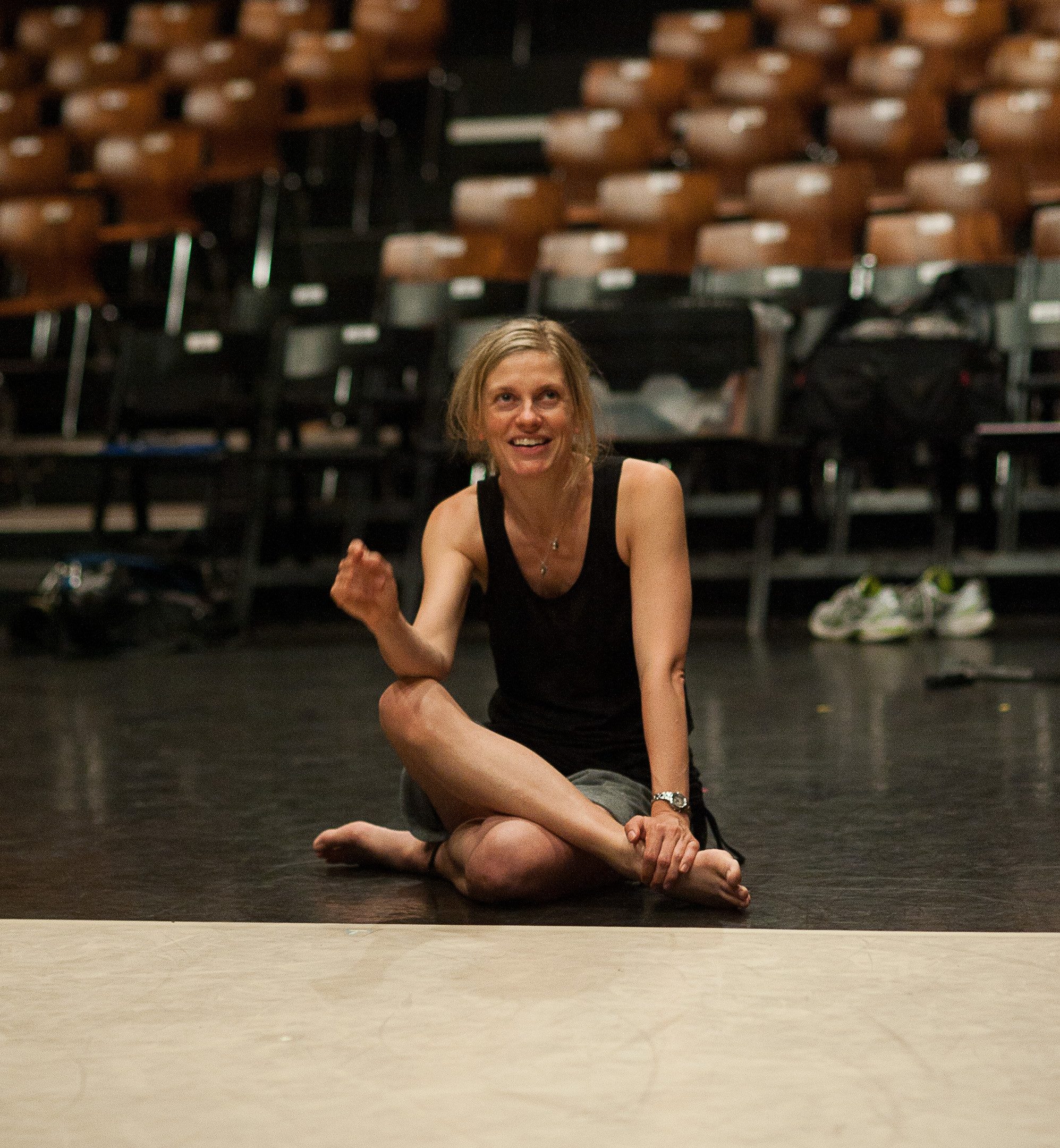Introduction
In a PillowTalk in 2011, choreographer and dancer Crystal Pite told a story of discovery—the kind of discovery that happens when you didn’t even realize you don’t know something. And then that new information forever changes you.
Discovering William Forsythe
The discovery came when Pite, at that time performing with Ballet British Columbia, first met choreographer William Forsythe as he came to set a work on the company. As a highly trained ballerina, Pite’s dancing was shaped by classical ballet’s formal organization of the body that stems from court dances of 18th century France. Forsythe introduced her to what she described as “back space”—that is, the world of motion that lay untapped behind her. His choreography uses the head and spine as mobile and active parts of the body, instead of quietly riding on a dancing lower body. Her understanding of the ballet body was altered by her experience. Not long after working with him in Canada, Pite began to dance with Forsythe’s Ballet Frankfurt, drawn to his contemporary ballet sensibility and his use of improvisation in the choreographic process.
This microcosm of a story shows how Pite, now an internationally renowned choreographer, was set on a dance path because of her relationship with Forsythe as an artistic mentor. She learned from him and then set off on a path of her own. She has said that she began choreographing because explorations she craved as a dancer weren’t being met.
Dance writer Judith Mackrell says of their relationship, “Crystal Pite used to be a dancer with William Forsythe, and her choreography is formed in the master’s style. The near freakish distortions of body shape, the bonelessly fluid linking moves, the loops of obsessional voiceover, the apocalyptic use of light—all these mark Pite out as part of the Frankfurt diaspora. But the Canadian choreographer’s talent is also emphatically her own.” Judith Mackrell, “Crystal Pite’s Kidd Pivot.” Guardian, September 18, 2009 Another Canadian choreographer with links to both William Forsythe and Ballet BC is Emily Molnar.
Storytelling
Pite’s choreography combines a fascination with facile, alert, quixotic dancing bodies and their ability to flirt and articulate narrative and expressive elements. While storytelling is familiar in classical ballet and early modern dance, it is less common in contemporary ballet, and fell out of choreographic fashion with postmodern choreographers in the 1960s and ‘70s. As Pite said in an interview,
I've got an obsession with narrative, [which is] kind of a taboo subject."
Pite has a long and rich relationship with Jacob’s Pillow, as a dancer (first with Ballet BC), a choreographer, an artistic director, and a Jacob’s Pillow Dance Award winner.
At the Pillow, Hubbard Street Dance Chicago and Cedar Lake Contemporary Ballet have performed her work. And her own company, Kidd Pivot, has performed to wild popular and critical acclaim, including the evening-length Dark Matters presented on two consecutive seasons.
In their first Pillow appearance in 2009, Kidd Pivot danced the evening-length Lost Action (2009).

When the piece was seen in London, Judith Mackrell reviewed it for the Guardian.
In some ways, Lost Action plays out like a crime movie. Its motivating action—a violent struggle that leaves a man dead—is played out over and over again, as if the choreography were hunting out clues or a killer. Yet with each repeat, the movement registers a new key…Pite has a rare gift for orchestrating bodies, part of the tension in Lost Action comes from wondering how she can top each new invention. But she has an even rarer gift for conveying emotion.Mackrell, Guardian, September 18, 2009
Audiences were taken with the dancing, the choreography, the choreographer, and the company. In an interview for the Jacob’s Pillow Archives in 2012, Pite talked about naming her company.
Dark Matters
Kidd Pivot returned in 2011 and 2012 with Dark Matters. The evening length work combines dance theatre and abstract contemporary dance, and is in turn dark and humorous, elegiac and virulent, with singularly stunning dancing by the performers. The dance begins with an exquisitely rendered relationship between a puppetmaker and his puppet. Four dancers clothed in black manipulate the puppet as the story unfolds.
The second act, with theatrical artifice stripped away, highlights the exquisite dancing Pite’s choreography demands. In the 2012 performance—expected to be the work’s final presentation anywhere—Pite returned to the role she had created for herself.

Pite explained in another interview that she recognizes the inherent complications with using dance in this way. “At the moment, I am really interested in narrative—and dance is a really inefficient and maddening way to tell a complex story. So every time I work on something I have to ask myself why am I doing this in dance. If I can’t find a good answer to that question, then I will abandon the idea or hang on to it but try to express it in another way.” Sarah Crompton, “Crystal Pite: ‘Every time, I ask myself: why am I doing this in dance?’” The Telegraph, April 2014
In another of her works, Grace Engine (2012), performed by Cedar Lake Contemporary Ballet in 2013, Pite fragments the narrative, making the dancers less specific characters, and more expressive of ideas and emotions. Grace Engine is suffused with Pite’s ability to use a balletic sensibility to suggest a narrative without being limited in the kinds of stories that can be told. She pushes the verticality of the ballet body off-center, with shifting points of gravity. Gorgeous unison dancing creates a community at times, while at other times it feels more like a crowd. Three central duets—first two men, then a man and a woman, then two women—become not about one person lifting another; rather moments of contact between people.
Dance writer Alastair Macaulay wrote, “Pite’s stagecraft is gripping: There are tableaus, formations and gestures that all keep seizing the attention, as do several urgent solos. The way that tableaus and lineups keep melting into movement is very fine.” Alastair Macaulay, “To Noise From Street, Humanity Rushes In: Cedar Lake Contemporary Ballet at Joyce Theater” New York Times, May 16, 2012
Pite has spent years reflecting on her dance, defining her artistic voice, and developing specific approaches to the choreographic process. She talked about some of those elements in the PillowTalk titled “Crystal Pite Goes Global” with Philip Szporer.
Interview with Pite
Szporer and Pite later collaborated with Marlene Millar on a 3-D film version of Lost Action, called Lost Action: Trace, which was screened at the Pillow in 2012, complete with 3-D glasses.

Hubbard Street Dance Chicago presented a stunning Pite solo, an excerpt of A Picture of You Falling (2008) in 2016. Accompanied by a matter-of-fact recording of a man’s voice describing the action, the solo is a tour de force of falling, catching, off center balancing, and momentum.
PUBLISHED March 2017

